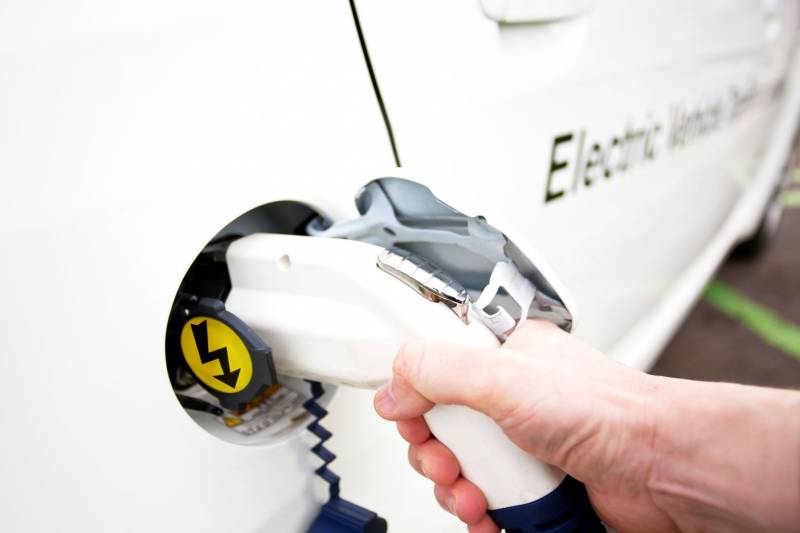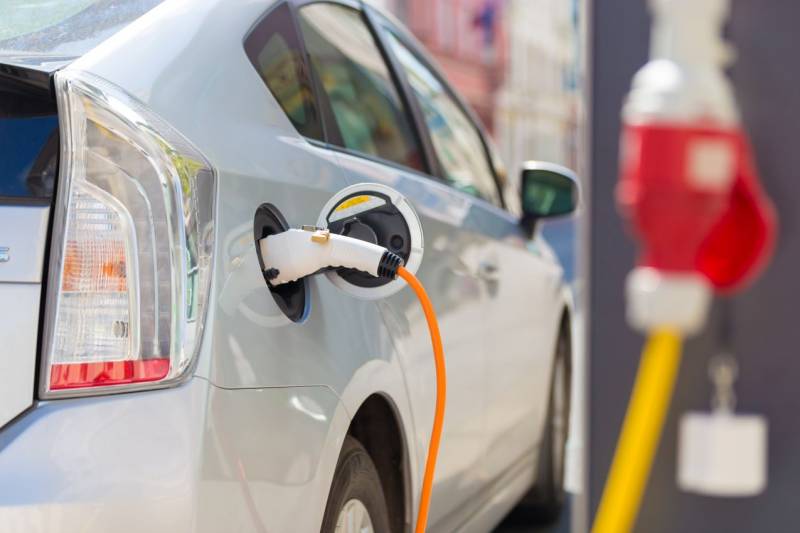article_detail
Date Published: 07/03/2023
How to get 7,000 euros off a new electric car in Spain: can non-Spaniards apply?
You can get money off a low-emissions vehicle in Spain if you scrap your old car before the end of the year

The European Union has declared that, as of 2035, you may no longer buy new vehicles that have a diesel or petrol combustion engine, in order to encourage people to take up electric cars and greener forms of transport.
Spain is one of the countries lagging furthest behind in the integration of electric mobility, making the availability of aid and benefits even more vital. That’s why, to make the purchase of a low-emission vehicle more affordable, you can take advantage of the so-called ‘MOVES III’ plan, which will pay you to trade in your old car for a new, environmentally friendly one until December 31, 2023.
What is the Moves 3 plan for electric vehicles?
Basically, the Moves III gives you a lump sum towards the purchase of an electric vehicle, provided you are trading up from an old car, especially one that can be scrapped immediately, and that you meet all the other requirement.
The amount of money provided for the purchase of low-emission vehicles varies depending on the type of vehicle.
Moves 3 plan requirements to be eligible to apply
For private individuals, those who are self-employed or administrative workers, the subsidies can reach up to 7,000 euros (or 9,000 euros if you trade in a car that is ready to be scrapped) in the case of commercial vehicles weighing up to 3,500 kg (category N1).
For passenger cars (category M1), the subsidy reaches a budget of 4,500 euros (7,000 euros with scrapping). Only vehicles with ECO or ZERO stickers, i.e. plug-in hybrids, electric or hydrogen cars, will be eligible.
The aforementioned amounts may be increased by 10% (not cumulative), in the following cases:
- Disabled persons with reduced mobility with an adapted vehicle
- Adapted light commercial vehicles registered in the name of self-employed disabled persons
- Individuals who are registered (empadronado) in municipalities of fewer than 5,000 inhabitants (registration must be maintained for at least two years)
- Self-employed individuals with physical activity who use the vehicle as a Taxi or ride-hailing vehicle
- Whether new, leasing or Km 0 (not second-hand), the price of the vehicle must not exceed 45,000 euros, excluding VAT (except for cars with fuel cell). With regard to the type of vehicle, the amounts vary depending on the mechanics. In the specific case of plug-in hybrids, the Government offers different subsidies depending on the approved electric autonomy of the vehicle.
How much money is available and why you should apply quickly

As mentioned, the amount of money you can get depends on several different factors, including whether you scrap the car or not, how much the new vehicle costs and what type of low-emissions system it has:
- Subsidies for electric cars (EV) or plug-in hybrids (PHEV) with more than 90 kilometres on the clock:
- Vehicles with a sales price (NOT INCLUDING VAT): up to 45,000 euros or 53,000 euros for passenger cars with 8 seats
- Aid WITHOUT SCRAPPING: 4,500 euros
- Aid WITH SCRAPPING: 7,000 euros
- Subsidies for plug-in hybrid cars (PHEV) with between 30 and 90 kilometres on the clock:
- Vehicles with a sales price (NOT INCLUDING VAT): up to 45,000 euros
- Post-purchase aid WITHOUT SCRAPPING: 2,500 euros
- Post-purchase aid WITH SCRAPPING: 5,000 euros
- Subsidies for fuel cell vehicles (FCV or FCHV)
- Vehicles with a sales price (NOT INCLUDING VAT): No limit
- Aid WITHOUT SCRAPPING: 4,500 euros
- Aid WITH SCRAPPING: 7,000 euros
- Aid for other vehicles
For 2023, the Government has changed the conditions for some vehicles. Large companies and SMEs can also benefit from the MOVES III Plan, although in these cases the subsidies are between 1,600 and 2,200 euros. Electric motorcycles, electric or plug-in light quadricycles are also eligible for aid. Those not included in the package are trucks, buses and gas vehicles. - Subsidies for the installation of recharging infrastructures
One of the new features of the 2023 version of the MOVES III Plan focuses on subsidies for the implementation of electric vehicle recharging points. There are currently 17,000 charging points available in Spain. The goal is that by the end of the year there will be 45,000 connections on public roads, for which the Government has included 500 million euros in the budget for this purpose.
The Government’s plan is to cover part of the installation of the charging point, whether on public roads or for private use. The aid may cover 70% of the installation with a maximum of 5,000 euros for private individuals. The budget limit will be up to 800,000 euros for companies or up to 2.5 million for SMEs, covering 30-55% of the cost of the installation in points of more than 50 kWh. If it is located in a town with fewer than 5,000 inhabitants, the percentage of aid may increase by an additional 5 to 10%.
As of 2023, the Government’s subsidies for buying a low-emissions car have been increased by 400 million euros, bringing the total amount of money the government has pumped into these subsidies to 1.2 billion.
This money will be handed out on a first-come, first-served basis until the entire allocation is exhausted for each Autonomous Community or region in Spain.
In previous years, the amounts set aside for this have not all been used up, but it is possible that, given the increase in the number of registrations, the budget will be exhausted before the end of this year.
Here is the amount of money available for this subsidy in each of the Autonomous Communities in mainland Spain (although each one may extend the budget if they wish):
- Andalusia: 67 million euros
- Aragón: 11.2 million euros
- Asturias: 18.5 million euros
- Cantabria: 4.9 million euros
- Castilla-La Mancha: 17.2 million euros
- Castilla y León: 20.2 million euros
- Catalonia: 61.1 million euros
- Community of Madrid: 83 million euros
- Valencian Community: 42.6 million euros
- The Basque Country: 18.8 million euros
- Galicia: 40.5 million euros
- The Region of Murcia: 11.8 million euros
- Navarra: 4.9 million euros
The Canary Islands and Balearic Islands have a slightly different arrangement. Wherever you are empadronado, it makes sense to phone your regional transport ministry office and ask how much money is left to cover the grant for you.
How to apply for financial aid under the MOVES 3 Plan
When you purchase the new vehicle, if it falls within the subsidy framework, it is the car dealer themselves who are in charge of the bureaucratic procedures with the Ministry of Ecological Transition and Demographic Challenge.
Once you have bought the car and all the registration processes have been completed, it is advisable to contact a solicitor to help you with your application for the grant.
When it’s done, your application will be sent to the Ministry, which will be in charge of returning the corresponding amount of the subsidy. Note that this subsidy will have to be taxed in the corresponding income tax return.
The deadline to apply is December 31, 2023. This deadline has been extended before, so it is not past the realms of possibility that it will be extended again into 2024.
Are expat residents allowed to apply for the grant?

Anyone who meets the aforementioned criteria and who is registered as a resident in Spain is eligible for this grant scheme, whether they are Spanish or not.
However, there have been tales of expat residents being told they will not be accepted for this scheme because they are foreigners. In theory and in law, of course, this is not the case and all residents are to be treated the same in this regard.
In practice, however, non-Spaniards may have to fight their corner harder in order to get their case heard. As long as there is enough money left in the funds to cover the costs of the grant and all the other paperwork is in order, your nationality should not be an obstacle.
It’s a good idea to hire a lawyer who is well-versed in the Spanish legal system to help make sure you don’t have any problems.
Find all the latest motoring and travel news here or join our Driving in Spain Facebook group for regular updates
Contact Spanish News Today: Editorial 966 260 896 /
Office 968 018 268

















